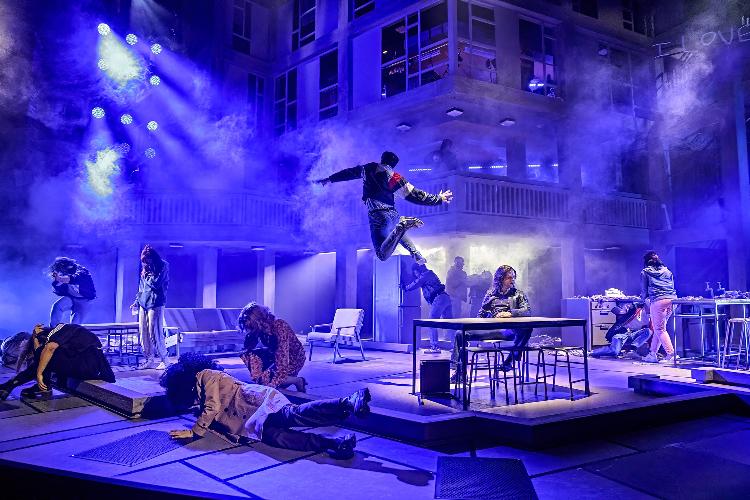You will hear it said that Standing at the Sky's Edge is a glorious love letter to Sheffield, the city of steel - and it is. But this beautiful, atmospheric piece of musical theatre goes further. It is also an ode to the north of England, as well as a celebration of working class culture spanning literal generations.
The premise of Chris Bush's book is inspired. One flat in Sheffield's iconic Park Hill high-rise housing estate. In 1960, it serves as a new beginning for families and young couples moving out of the city's slums. By 1989, a Liberian refugee family makes the crumbling community in the sky a sanctuary. And once we reach 2015, things have come full circle; the estate has been spruced up, working class families have been moved out and a new generation of wealthy professionals are moving in.
Under Rob Hastie's expert direction, we see three timelines play out concurrently. Standing at the Sky's Edge makes full use of Ben Stones' single set, the exposed and basic interior feeling relevant across all eras. This is a show with a charged atmosphere, like a tinderbox waiting to go up, and we soon see the collectibe challenges each generation of character faces.
Fresh from winning a host of awards following its run at the National Theatre, this latest iteration of the show retains its rawness. Although this current cast may not reach the same heights at those that went before, they all bring something unique to the role. Laura Pitt-Pulford's Poppy (“I'm just saying Nick Clegg has kind eyes”), for example, is especially devastating as she scrambles to put her life back together, having moved from London after a breakup.

Joel Harper-Jackson is equally as devastating in his portrayal of Harry, once the country's youngest ever foreman but now left on the scrap heap as the Thatcher years decimate the steel industry. Bush does not shy away from highlighting the reasons why the high rise dream has fallen apart in what was a particularly brutal era for South Yorkshire.
Then there is Richard Hawley's score. His music and lyrics bring a resonance to the piece, capturing the changing moods as we watch lives unfolding. However, despite many a heartfelt number soaring, the show would have benefited from more variation in tone and musical style. It is also a different approach to using music in storytelling. Far from a traditional musical, Standing at the Sky's Edge can be considered in many ways as a play with music, with the numbers essentially reflecting on the mood and thoughts of the characters, rather than moving the story along.
And there is absolutely space for different styles in the West End - but it can occasionally slow the piece down and does make one wonder whether it may have been elevated as a standalone play. Despite the atmospheric songs, Lynne Page's choreography does not always hit the mark; there are an awful lot of characters simply walking backwards and forwards for large parts. However, this shortcoming is made up for in the more dramatic ensemble moments, such as Act One closer ‘There's a Storm A-Coming'.
Standing at the Sky's Edge will transcend the world of musical theatre. It's a cliche to say but it will appeal to those who typically do not see themselves as fans of the form. While not perfect, it is a mesmerising piece for the most part and will leave audiences inspired and devastated in equal measure - even if one of the character's story arcs has an immensely dissatisfying conclusion.
It runs until 9 August. Tickets from £25: here.
Review: Tom Ambrose Photos: Brinkhoff-Moegenburg

